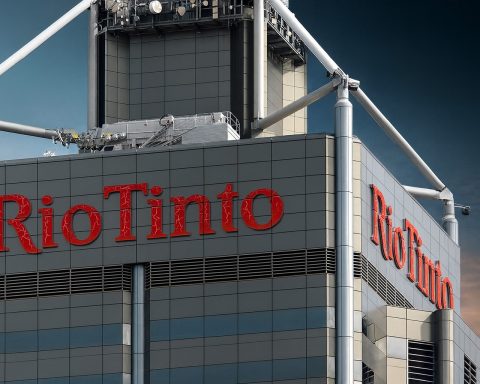Opendoor Technologies’ stock is back in the spotlight as a slowing housing market collides with meme‑stock style volatility, a new “shareholder‑first” warrant dividend, and an aggressive AI‑driven turnaround plan.
Key Takeaways for OPEN Stock Today (November 20, 2025)
- Latest price: Opendoor Technologies Inc. (NASDAQ: OPEN) recently traded around $6.16, down roughly 8% from yesterday’s close near $6.70, after swinging between $6.05 and $7.05 on very heavy volume of about 110 million shares.
- Volatility remains extreme: The stock is still up roughly 300%+ year-to-date, even after a near‑30% slide over the past week and another sharp drop today. [1]
- Housing market drag: Fresh data showing a stalled U.S. housing market has reignited worries about Opendoor’s inventory-heavy model, which leaves it holding billions of dollars of homes with single‑digit gross margins. [2]
- New warrant “dividend”: Opendoor will distribute three series of tradable warrants (OPENW, OPENL, OPENZ) on November 21, 2025 to shareholders of record as of November 18, giving holders leveraged upside but also introducing future dilution risk. [3]
- Turnaround story, not a finished product: Q3 2025 revenue beat expectations at $915 million, but the company still posted a $90 million net loss and guided to another loss in Q4 as it pivots toward a software‑ and AI‑driven real‑estate marketplace under new CEO Kaz Nejatian. [4]
OPEN Stock Price Today: How the Market is Trading Opendoor
As of late trading on Thursday, November 20, 2025, Opendoor shares were changing hands at about $6.16, down roughly $0.54 on the day, an ≈8% decline from yesterday’s close near $6.70. [5]
During today’s session:
- Open: ~$6.96
- Intraday high: ~$7.05
- Intraday low: ~$6.05
- Recent price: ~$6.16
- Volume: ~110.1 million shares traded, underscoring intense speculative interest.
Even after this week’s sell‑off, OPEN remains one of 2025’s wildest rides:
- YTD gain of roughly 300–320%, according to multiple data providers. [6]
- 52‑week range: roughly $0.51 to $10.87, a span that captures its journey from near‑delisting penny stock to meme‑stock darling and back into correction territory. [7]
Recent third‑party estimates put Opendoor’s market capitalization in the $6–7+ billion range at recent prices, with short interest above 20% of float — a setup that both fuels violent rallies and deep pullbacks. [8]
Why is OPEN Stock So Volatile This Week?
1. Housing Market “Plateau” Hits the Core Business
On Wednesday, Opendoor fell about 11% to close near $6.69, notably underperforming a modestly green S&P 500 and Nasdaq. [9]
The immediate catalyst: housing data from Redfin showing October home sales and new listings were essentially flat versus September, with the brokerage describing the last year as “especially stagnant.” [10]
For Opendoor, which:
- Buys homes for cash,
- Holds them as inventory, and
- Resells them for a relatively thin profit,
a frozen market is close to a worst‑case scenario. Inventory sits longer, carrying costs pile up, and small pricing mistakes can turn into big losses. Q3 2025 gross margin was just 7.2%, down from 7.6% a year earlier — not a lot of cushion in a choppy market. [11]
2. A “Hangover” From the Warrant Record Date
On November 18, Opendoor set the record date for its new warrant “dividend.” Investors who held OPEN common shares at 5:00 p.m. ET that day will receive three series of tradable warrants on November 21. [12]
Some bulls, notably activist investor Eric Jackson, have argued that part of this week’s 20‑plus percent pullback is simply post‑record‑date selling by traders who:
- Bought OPEN ahead of the record date,
- Locked in eligibility for the free warrants, then
- Turned around and dumped the common stock. [13]
That kind of flow can exaggerate downside moves in an already high‑beta name.
3. Retail Sentiment and Meme‑Stock DNA
OPEN has spent much of 2025 trading more like a meme stock than a traditional real‑estate company:
- In July, shares rocketed from about $0.51 to nearly $5 in less than a month as retail traders piled in, avoiding a planned reverse split and a looming Nasdaq delisting. [14]
- Over just two weeks in July, around 6 billion shares reportedly changed hands. [15]
This week, social‑sentiment data from Stocktwits shows the crowd shifting from “bullish” back to “neutral” after a five‑day slide, with some retail traders openly rotating into the “next” hot ticker. [16]
At the same time, Jackson has gone even further out on the limb, suggesting on X that OPEN could ultimately reach $500 per share, up from his already aggressive $82 target in July — a projection that assumes the turnaround massively exceeds expectations. [17]
The result: a classic tug‑of‑war between believers in a multi‑year AI‑and‑tokenization transformation and skeptics focused on the housing cycle, ongoing losses, and dilution.
Q3 2025 Earnings: Strong Top Line, Persistent Losses
Opendoor’s most recent quarter, Q3 2025 (reported November 6), is the fundamental backdrop for today’s trading.
Headline Numbers
According to company filings and third‑party summaries: [18]
- Revenue: $915 million
- Beat consensus estimates of about $850–$852 million.
- Net loss: $90 million
- Wider than the $78 million loss in Q3 2024.
- EPS: –$0.12
- Missed an expected loss of about –$0.07.
- Gross margin: 7.2%
- Down from 7.6% a year ago.
Operationally:
- Homes sold: 2,568 (down from 3,615 in Q3 2024)
- Homes purchased: 1,169 (down sharply from 3,504)
- Ending inventory: 3,139 homes, valued at about $1.05 billion, versus 6,288 homes and $2.15 billion a year earlier.
On an adjusted basis:
- Contribution profit: $20 million (2.2% margin, down from 3.8%)
- Adjusted EBITDA: –$33 million (slightly better than –$38 million last year)
- Adjusted net loss: –$61 million (improved from –$70 million). [19]
The picture is nuanced: revenue and some adjusted metrics improved, but GAAP losses widened, and the company is buying and selling fewer homes than it did a year ago.
Guidance: Pain Before (Hoped‑For) Progress
Management’s Q4 2025 outlook underscores why the stock has been so jumpy: [20]
- Q4 revenue is expected to be about 35% lower quarter‑over‑quarter, largely because inventory was run down in Q3.
- Acquisition volumes are expected to rise at least 35% vs. Q3, setting up more activity into 2026.
- Q4 adjusted EBITDA loss is projected in the high‑$40 million to mid‑$50 million range.
- Management is targeting breakeven adjusted net income by the end of 2026 on a forward 12‑month basis.
In other words, Q3 shows progress, but even the company itself doesn’t expect clean profitability for at least another year.
The Warrant “Dividend” Explained: OPENW, OPENL, OPENZ
One of the biggest near‑term drivers of trading — and confusion — around OPEN is its special dividend of tradable warrants.
How the Warrant Distribution Works
Per Opendoor’s November 6 press release: [21]
- Record date: 5:00 p.m. ET on November 18, 2025
- Distribution date: On or about November 21, 2025
- What shareholders get: For every 30 common shares held on the record date, investors receive:
- 1 Series K warrant (ticker expected: OPENW),
- 1 Series A warrant (OPENL),
- 1 Series Z warrant (OPENZ).
- Exercise prices:
- Series K: $9.00
- Series A: $13.00
- Series Z: $17.00
- Expiration: All three series are scheduled to expire on November 20, 2026, unless an early‑expiration trigger is hit (if OPEN trades above certain thresholds for sustained periods).
The warrants are free to eligible shareholders and are expected to be freely tradable on Nasdaq, giving holders a sort of built‑in call option on Opendoor’s future performance.
What It Means for Investors
Opendoor frames the program as a “shareholder‑first” alignment tool, arguing that: [22]
- There is no dilution at issuance (dilution only occurs if and when warrants are exercised).
- If exercised for cash, the company receives additional growth capital to support its strategy and balance sheet.
However, there are important implications:
- The structure encourages leverage: investors who keep both shares and warrants are effectively increasing their exposure to Opendoor’s upside and downside.
- If the stock doesn’t reach the $9–17 exercise levels before the warrants expire, they may end up worthless.
- If the stock does surge and many warrants are exercised, common shareholders who don’t participate could face meaningful dilution of their ownership percentage.
Some bulls suggest recent selling is partly mechanical — traders capturing the free warrants and then unloading the common stock — while skeptics view the move as financial engineering in a still‑unprofitable business. [23]
New CEO, AI Pivot and Tokenization Hype
Opendoor is in the middle of a high‑stakes leadership and strategy reset.
Leadership Shake‑Up
After years of heavy losses — including a $1.4 billion loss in 2022 — Opendoor brought in Kaz Nejatian, formerly COO of Shopify, as CEO in September 2025. Co‑founders Keith Rabois and Eric Wu rejoined the board, with Rabois becoming chairman. [24]
Nejatian’s compensation package includes large performance‑based stock units tied to ambitious price targets, aligning his payoff with significant shareholder gains if the turnaround works. [25]
“Refounding” Opendoor as a Software & AI Company
In Q3 communications, Nejatian said the company is “refounding Opendoor as a software and AI company,” highlighting more than a dozen AI‑powered features rolled out within his first month: [26]
Examples cited by research notes and coverage include:
- AI‑driven home scoping and condition assessments,
- Automated title and escrow workflows,
- Multilingual AI valuation agents,
- A revamped, more automated inspection system.
According to a Zacks‑summarized note referenced by Stocktwits, these tools have:
- Cut home assessments from nearly a full day to about 10 minutes, and
- Reduced human underwriters involved in a deal from as many as 11 down to just one,
- Helped double weekly acquisition contracts from mid‑September to late October. [27]
The strategy: using software to lower operating costs, improve pricing accuracy and speed up inventory turnover, which are exactly the pain points in a weak housing market.
Tokenization and Web3‑Style Hype
Adding another speculative layer, Nejatian has also confirmed “tokenization” plans in public comments, though details remain sparse. [28]
Market chatter and coverage suggest possibilities such as:
- Digital tokens tied to fractional ownership of homes or home portfolios,
- The use of stablecoins or crypto‑based payments on Opendoor’s platform.
So far, this is more vision than product, but it resonates strongly with the same retail investors who helped turn OPEN into a meme stock over the summer.
Insider Activity, Big Holders and Legal Overhang
CFO Sale During the Slide
Amid this week’s drop, interim CFO Christina (Christy) Schwartz sold roughly 73,951 shares on November 18, generating about $583,000 in proceeds via a mandatory sell‑to‑cover program designed to cover taxes on stock compensation. [29]
While such sales are often routine, the timing — during a sharp decline and right after the warrant record date — has added to negative sentiment.
CEO Buying and Institutional Interest
Balancing that, recent disclosures show:
- CEO Kaz Nejatian bought around 125,000 shares (about $1 million worth) on November 11, a show of confidence that coincided with a double‑digit single‑day jump in the stock. [30]
- Liquidity provider Jane Street has disclosed a 5.9% stake (over 44 million shares), highlighting strong institutional trading interest. [31]
StockTitan data also points to:
- Insider ownership just under 12%,
- Institutional ownership around 46%,
- Short interest near 23% of float — levels that can amplify both short squeezes and long squeezes. [32]
Class‑Action Settlement in the Background
Separately, Opendoor is working through the tail end of legacy legal issues. A proposed $39 million securities class‑action settlement would resolve claims from investors who bought stock between December 21, 2020 and November 3, 2022, with a court hearing scheduled for January 6, 2026. [33]
While the dollar amount isn’t crippling at Opendoor’s current scale, it reinforces the history of missteps and regulatory scrutiny that investors must factor into their risk assessment.
Key Risks for OPEN Stock
For all the upside narratives — AI, tokenization, meme‑stock energy, and leveraged warrants — there are serious, concrete risks:
- Macroeconomic and Housing Risk
Opendoor’s model is highly sensitive to home prices, demand and mortgage rates. Redfin’s description of an “especially stagnant” market over the last year highlights that the tide has not yet turned decisively in Opendoor’s favor. [34] - Thin Margins and Ongoing Losses
Gross margins in the 7–8% range and repeated net losses leave little room for error. The company lost $1.4 billion in 2022 and remains firmly in the red on a GAAP basis. [35] - Capital Intensity and Balance Sheet Pressure
Opendoor still holds over $1 billion of home inventory, and earlier coverage has pointed to net debt approaching $2 billion, making it vulnerable if the housing slump deepens or credit conditions tighten. [36] - Execution Risk on the AI & Marketplace Strategy
Management’s plan to become an AI‑heavy, asset‑lighter “Opendoor 2.0” is ambitious — but unproven at scale. Revenue beats are encouraging, yet the guidance for continued adjusted losses into 2026 underlines how hard the pivot will be. [37] - Dilution and Complexity from Warrants & Incentives
The warrant dividend and large performance‑based equity packages for leadership introduce potentially significant future dilution if the stock succeeds — a trade‑off that current shareholders need to understand clearly. [38] - Meme‑Stock Volatility
OPEN’s history of 10x moves, massive volume spikes and heavy short interest means fundamentals can be overshadowed by sentiment, options flows and social media — both on the way up and on the way down. [39]
What Today’s Move Means for Traders vs. Long‑Term Investors
For short‑term traders, OPEN is essentially a high‑beta trading vehicle:
- Wide intraday ranges,
- Deep liquidity,
- Elevated short interest,
- Frequent news and social buzz.
Those features create opportunities — and very real blow‑up risk — on both sides of the trade.
For long‑term investors, today’s pullback is another reminder that:
- The turnaround is still early;
- The company is not yet profitable, and
- The investment thesis hinges on management’s ability to use AI and software to tame a historically brutal, capital‑intensive business model.
The most cautious institutional voices argue that Opendoor remains suitable only for aggressive, risk‑tolerant investors willing to accept the possibility of large losses if the strategy fails. [40]
What to Watch Next for OPEN
Looking ahead, key catalysts for Opendoor stock include:
- Warrant distribution and trading (Nov 21, 2025):
How OPENW, OPENL and OPENZ trade — and whether they spark arbitrage or hedging flows — could influence OPEN’s day‑to‑day volatility. [41] - Housing data & mortgage rates:
Any sign that transaction volumes are accelerating would be a tailwind; further stagnation or price declines could squeeze margins. - Updated AI metrics and product milestones:
Investors will want to see concrete evidence that AI tools are sustainably lowering costs, improving margins and accelerating resale velocity, not just generating buzz. [42] - Balance sheet and capital raises:
How (and whether) Opendoor uses warrant exercise proceeds or other financing to shore up its position will matter for dilution and solvency risk. - Progress toward the 2026 profitability goal:
Each quarterly report between now and late 2026 will be judged against management’s promise to reach breakeven adjusted net income on a forward basis by then. [43]
This article is for informational purposes only and does not constitute financial, investment or trading advice. Always do your own research and consider speaking with a licensed financial advisor before buying or selling any security.
References
1. finance.yahoo.com, 2. blockonomi.com, 3. www.globenewswire.com, 4. www.gurufocus.com, 5. blockonomi.com, 6. finance.yahoo.com, 7. blockonomi.com, 8. www.stocktitan.net, 9. blockonomi.com, 10. blockonomi.com, 11. www.gurufocus.com, 12. www.globenewswire.com, 13. stocktwits.com, 14. investorsobserver.com, 15. investorsobserver.com, 16. stocktwits.com, 17. stocktwits.com, 18. www.gurufocus.com, 19. www.gurufocus.com, 20. www.stocktitan.net, 21. www.globenewswire.com, 22. www.globenewswire.com, 23. stocktwits.com, 24. en.wikipedia.org, 25. www.stocktitan.net, 26. www.gurufocus.com, 27. stocktwits.com, 28. stocktwits.com, 29. blockonomi.com, 30. coincentral.com, 31. www.gurufocus.com, 32. www.stocktitan.net, 33. www.stocktitan.net, 34. blockonomi.com, 35. en.wikipedia.org, 36. www.gurufocus.com, 37. www.gurufocus.com, 38. www.globenewswire.com, 39. investorsobserver.com, 40. www.nasdaq.com, 41. www.globenewswire.com, 42. www.gurufocus.com, 43. www.stocktitan.net







